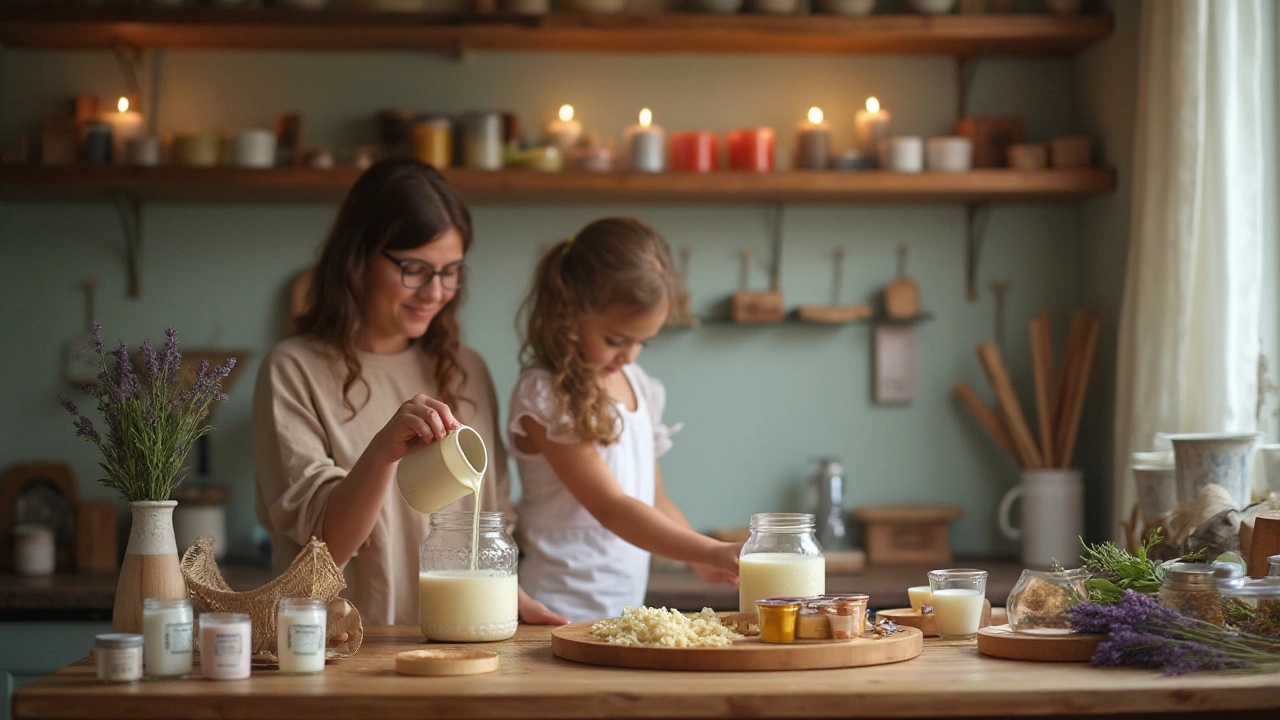Want candles that smell great, cost less, and avoid mystery ingredients? Making your own is easier than you think. Below I share the basic supplies, a quick soy candle recipe, safety steps, and a few troubleshooting tips so your first batch actually works.
Keep it simple: a heat-safe pouring pot or double boiler, a digital kitchen scale, a thermometer, candle wax (soy, beeswax, or paraffin), fragrance oil or essential oils made for candles, pre-tabbed wicks, and jars or tins. Buy a small scale — measuring by weight gives consistent results. Use a thermometer so wax reaches the right pouring temperature. If space is tight, a metal measuring pitcher works for pouring.
Tools ready? Try this basic soy candle that suits jars and beginners. Use weight measurements: 200 g soy wax flakes, 15 g fragrance (about 7-8% load), one pre-tabbed wick sized for your jar, and a 250 ml jar.
Step 1 — Melt: Heat wax in a double boiler until fully melted, around 75–80°C (167–176°F). Remove from heat and cool to the recommended fragrance addition temp — usually 60–65°C (140–149°F) for soy.
Step 2 — Add fragrance: Stir in the fragrance oil for 1–2 minutes to fully blend. Pour slowly into your jar while keeping the wick centered. Use a clothespin or wick holder to keep it straight.
Step 3 — Cure: Let candles cool at room temperature. For best scent throw, cure soy candles 48 hours to a week before burning. Trim wick to 6 mm (1/4 inch) before lighting.
Quick testing: Light one candle for a 4-hour burn to check the melt pool reaches the jar edges. If it tunnels (burns only down the middle), the wick may be too small. If the flame smokes or mushrooms, the wick is too large or the fragrance load is too high.
Safety first: never leave a burning candle unattended. Burn on a heat-safe surface, keep away from drafts, children, and pets. Do not move a burning candle. Use a snuffer or gently blow it out and avoid water to extinguish — water can splatter hot wax.
Material notes: Soy wax is plant-based, easy to work with, and best for beginner jars. Beeswax burns long and clean but needs different wick sizing and holds less fragrance. Paraffin gives strong scent throw but is a petroleum product—choose based on your priorities.
Finishing touches: Label with scent and pour date. Reuse jars from store-bought candles or jams — clean with hot water and a little scraping. Gift idea: pair a candle with matches and a short note about burn time.
Start small, test one jar at a time, and tweak wick size or fragrance load as you go. Once you nail one recipe, experimenting becomes fun instead of frustrating.

Discover the art of making your own aromatherapy candles with this easy-to-follow guide. Transform your home into a fragrant haven with custom scents made from essential oils. This step-by-step process ensures a rewarding and enjoyable crafting experience. Perfect for beginners and experienced crafters alike.
Read More